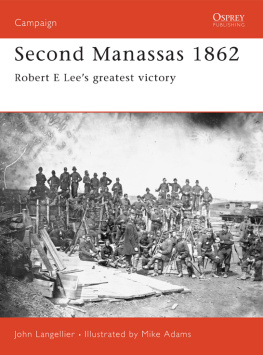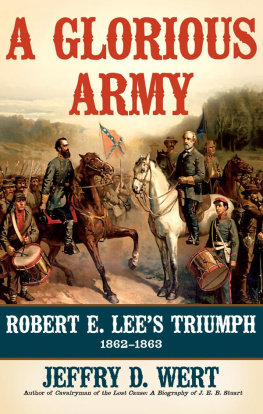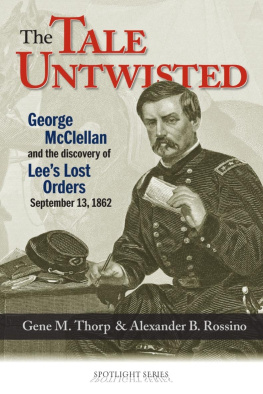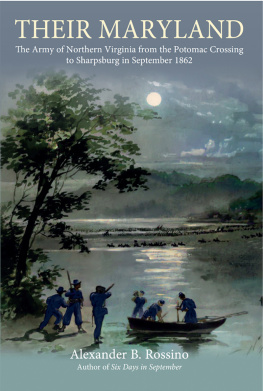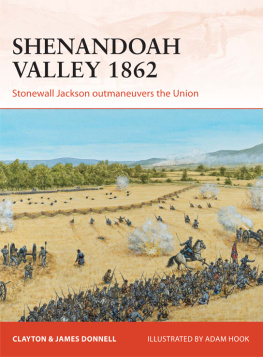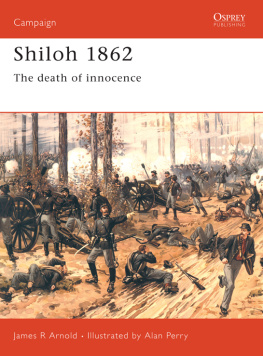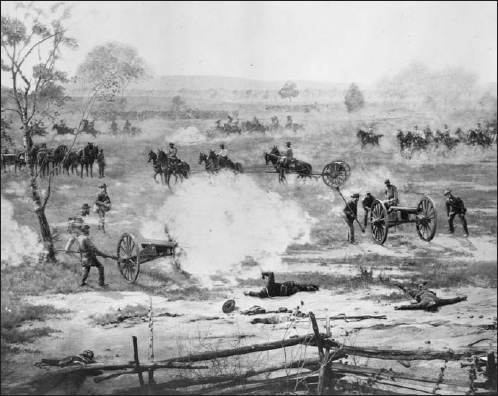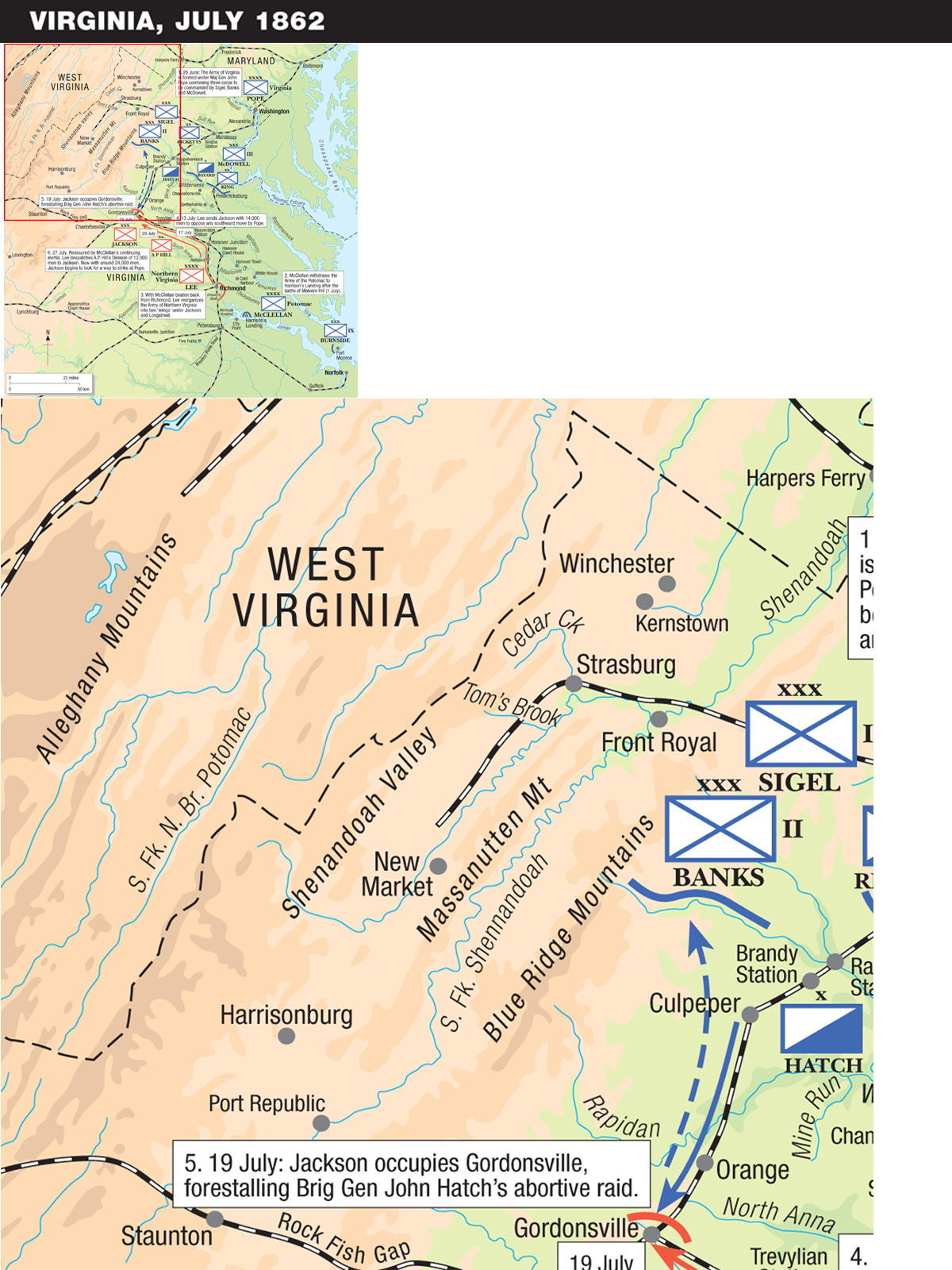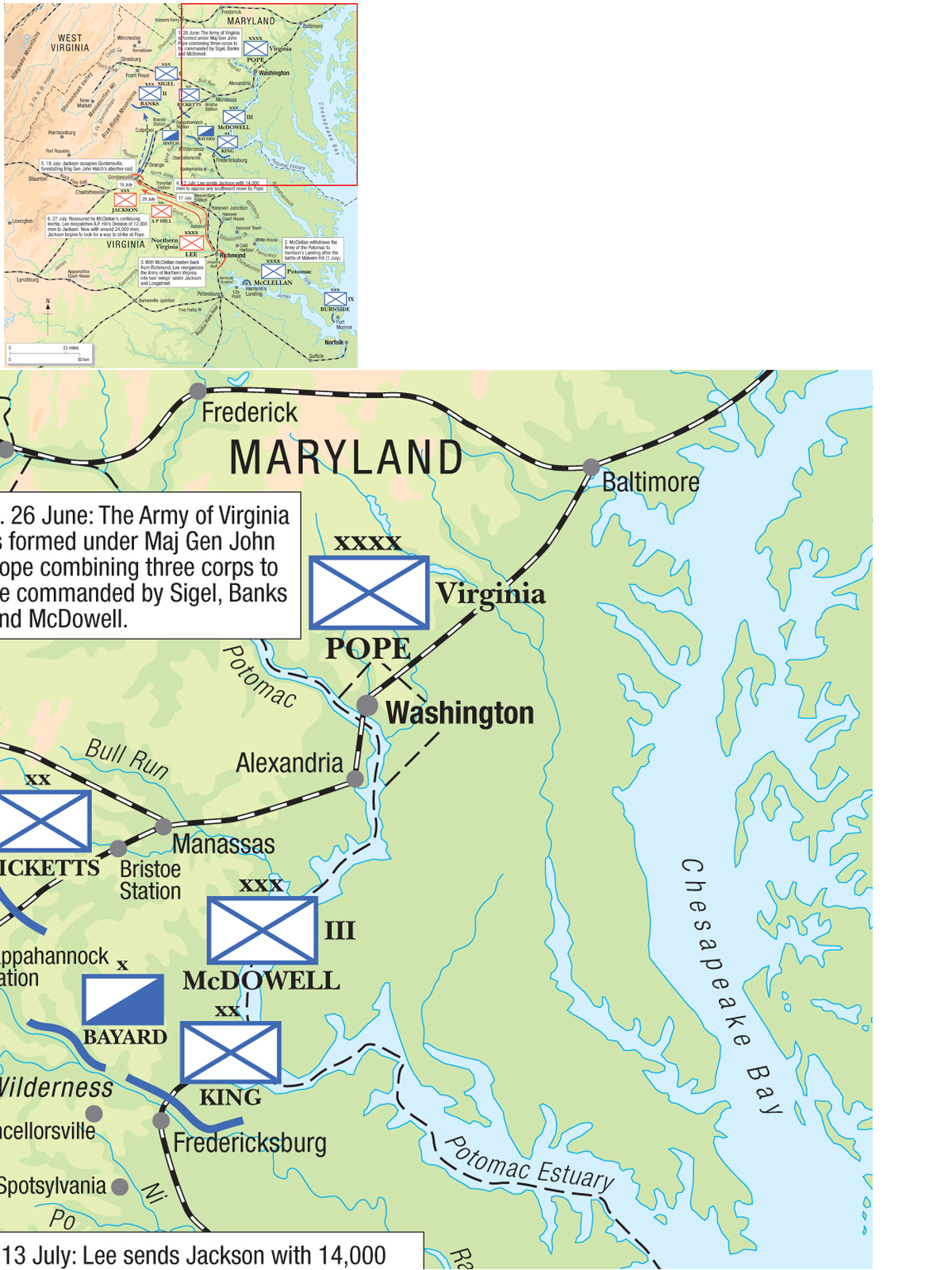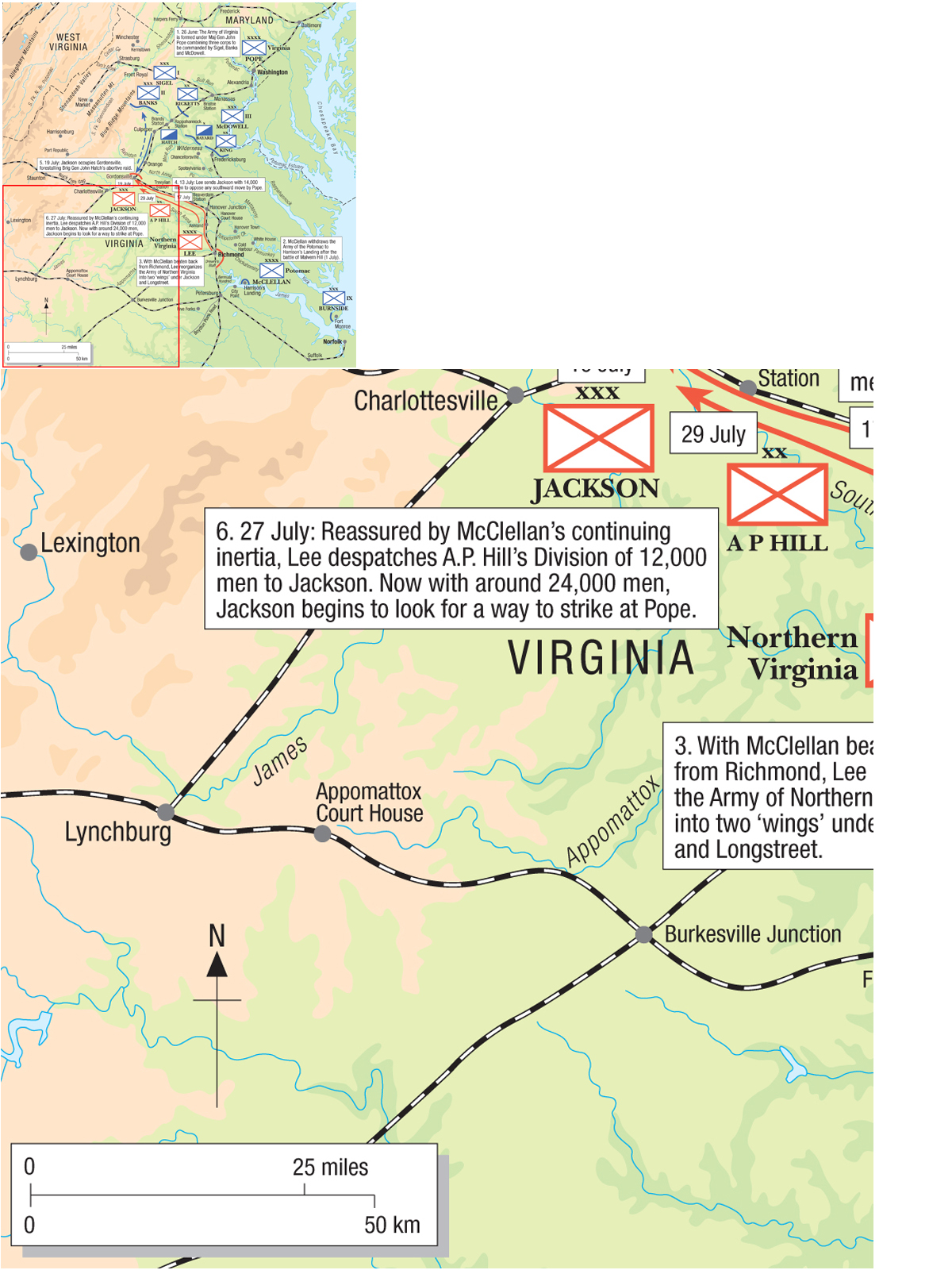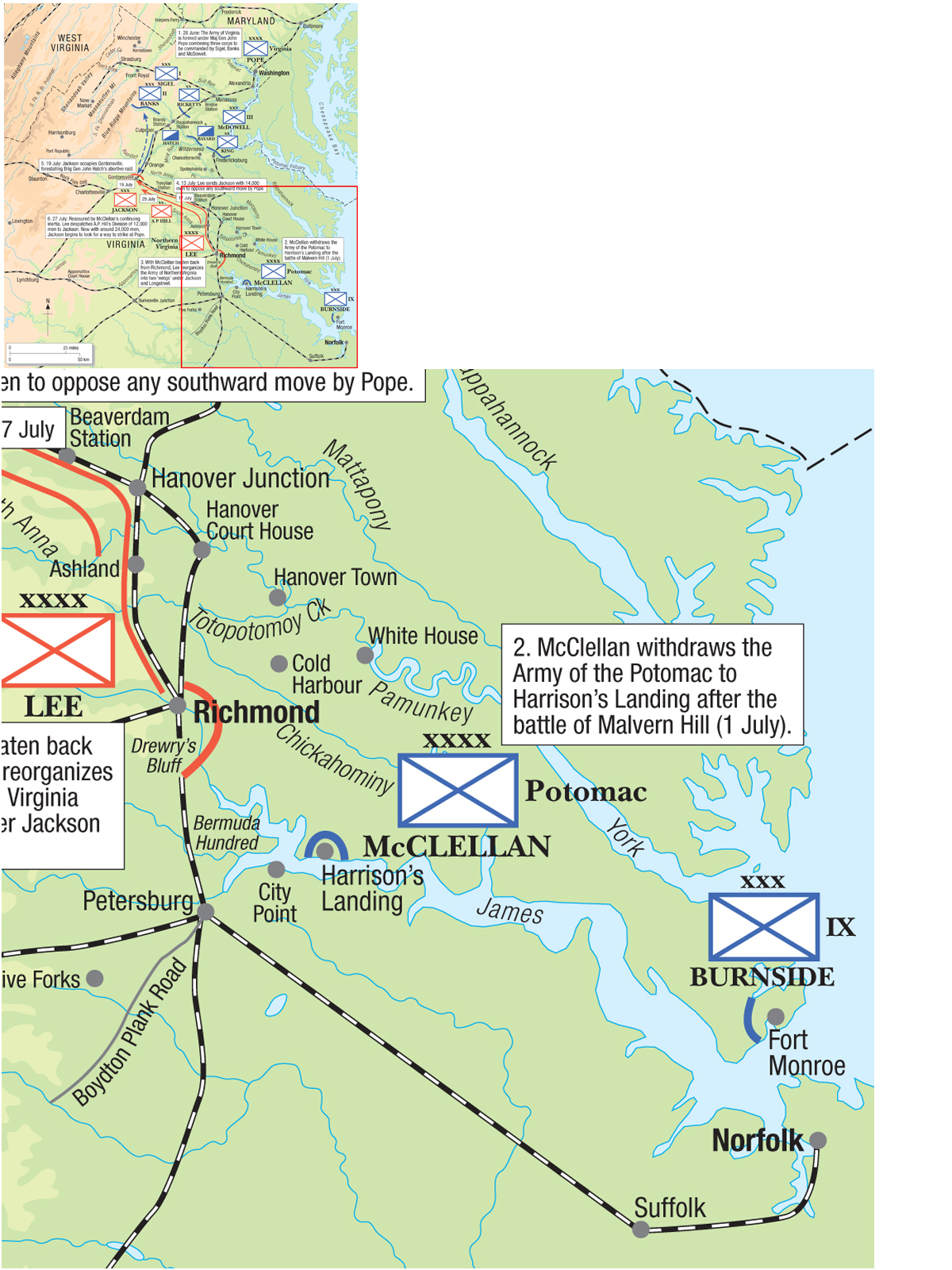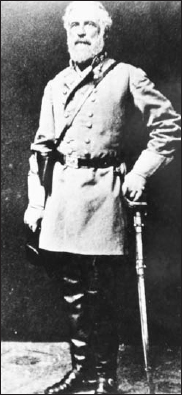Campaign 95
Second Manassas 1862
Robert E Lees greatest victory
John Langellier Illustrated by Mike Adams
Series editor Lee Johnson Consultant editor David G Chandler
CONTENTS
ORIGINS OF THE CAMPAIGN
F rom the fall of Fort Sumter in South Carolina on 14 April 1861, the first year of the Civil War had gone badly for the Union. The first major engagement between the two untested armies demonstrated the Federals typical poor showing during the course of the early fighting. On 21 July, Major General Irvin McDowells Yankees fled from the Confederates under the overall command of General Joseph E. Johnston at the Battle of Bull Run, as the North called it, or the Battle of Manassas, as the Southern victors referred to the brief encounter.
Reserved Virginian Robert E. Lees masterful handling of operations, during the Second Manassas campaign, did much to establish him as the premier military leader of the Confederate States of America. NA
After this dbcle President Abraham Lincoln immediately set out to find a military man who would not fail him as McDowell had. He also sought a winning strategy to crush the Rebels. Old Abe quickly settled upon one key strategic goal the capture of the capital of the Confederate States of America at Richmond, Virginia. And the man who Lincoln thought could achieve this was a self-styled Napoleon of the New World, Major General George B. McClellan. During late July 1861 the diminutive major general had been responsible for establishing Washington, DCs defenses. This was much to Lincolns relief because he was apprehensive about his own capital becoming the target of the Confederate forces.
With this accomplishment to his credit, Northern officials tasked Little Mac with the creation of what would become the Army of the Potomac. Once he had forged the Federal soldiers into this mighty weapon McClellan proposed to move by sea and assemble at Fort Monroe, Virginia. This Federal bastion was about seven days march from Richmond, and thus a logical staging area for McClellans proposed invasion.
By March 1862 McClellan had assembled a sufficiently powerful force to begin his move to the Virginia Peninsula. He had hoped for more troops, but Lincoln, fearing for Washingtons security, refused McDowell, who was by now relegated to the command of a corps, permission to send his 40,000 soldiers with McClellan. Instead McDowells I Corps was retained in the vicinity of Manassas where the defeat of the previous year doubtless remained fresh in his mind.
This was only one of the problems that plagued McClellans bid to capture Richmond. Indeed, his own inability to take decisive action resulted in a months delay in the unnecessary siege of Yorktown. That costly decision allowed Confederate General Johnston to bring up his army to face McClellan. McClellan had ordered siege artillery to be brought up from Washington, but two days before his bombardment was due to begin Johnston withdrew toward Richmond. McClellan pursued the retreating Johnston slowly to within a few miles of the seat of the Confederate government. McClellan still hoped that McDowell, by now at Fredericksburg, would join him and further bolster his numbers. This would only be possible if another Union command under General Nathaniel Banks, could secure northern Virginias strategic Shenandoah Valley. The valley was both a valuable source of food and materials for the Confederacy and a possible route for a Southern attack on Washington. McDowells forces at Fredericksburg would not be released to McClellan until any potential threat from the Shenandoah Valley had been dealt with.
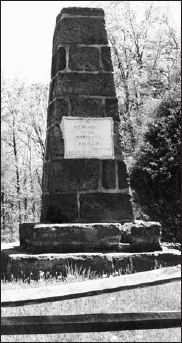
Union survivors built an obelisk near the Brawner farmhouse to commemorate the deadly contest at Second Bull Run, the Northern name for this engagement. The opposing sides often gave different titles to battles.
General Thomas Stonewall Jacksons lightning Shenandoah Valley campaign in May and June 1862 showed the threat was far from dealt with. With 18,000 men, Jackson ran rings around numerous separate Union commands that in total outnumbered him almost four-to-one. In the spring, Jackson rode roughshod over not only Bankss men but also those of McDowell and a third command under the original standard bearer of the Republican party, John Charles Frmont. Attacking the fragmented Union corps in the Valley, Jackson won a series of victories at McDowell (8 May), Front Royal (23 May), Winchester (25 May), Cross Keys (8 June) and Port Republic (9 June).
Such was the effect of the victories won by Stonewall Jackson and his foot cavalry, an honorific bestowed on Jacksons men as a result of their lightning movement and aggressive tactics during the Valley campaign, that they were able to rejoin the Army of Northern Virginia to assist in the defense of Richmond. With General Johnston having been wounded at Seven Pines (Fair Oaks), General Robert E. Lee had now taken command.
It became clear to Lincoln that he had to address a number of issues as the summer of 1862 brought further bad news to the Northern cause. After the intensive Seven Days campaign, in which McClellan failed to overwhelm the Confederate defenders of Richmond, Lincoln considered new candidates for the post of general-in-chief. A well respected West Point graduate, Henry Halleck, was seen as the heir apparent, but he would be cast more as a chief of staff than a field leader.
Furthermore, the president realized the disjointed commands that Jackson had humiliated needed to be consolidated under one man. This individual might also be a potential replacement for McClellan as the field commander of the Union Army. As such, it was necessary to find a contender with the right qualities, not the least of which was actual victory against a major Southern force. There was no one who could make that claim in the eastern theater, but fighting in the western theater had been less one sided. There, some Northerners had demonstrated grit and the ability to win. The western theater seemed to Lincoln the most fertile ground to seek a fighting general during that bleak summer of 1862.
CHRONOLOGY
1861
12 April General P.G.T. Beauregard orders the attack on Fort Sumter,
15 April Union President Abraham Lincoln calls upon the loyal states to furnish 75,000 volunteers.
21 July First Battle of Bull Run (Manassas) Irwin McDowell suffers the Unions first major defeat in the field.
1862
Next page
